When this review was first published, this videogame was titled Backbone. It has since been retitled to Tails Noir. The text of this review reflects its original title.
Backbone is a narrative videogame set in a post-noir Vancouver populated by anthropomorphic mammals. I play as Howard Lotor, a raccoon working as a private investigator for the city’s poor and working class denizens. Howard falls into the classic Sam Spade or Mike Hammer noir antihero archetype, dressed in a trenchcoat and tie, a cigarette perched eternally between his lips, weary and cynical but with a soft spot for the neglected underclass that seek out his services. Odette Green, an otter who wants evidence of her husband’s infidelity, is just such a client. Howard pursues Mr. Green to a brothel where, in typical noir fashion, his simple job spirals into a broader conspiracy that invisibly threatens the people of Vancouver.
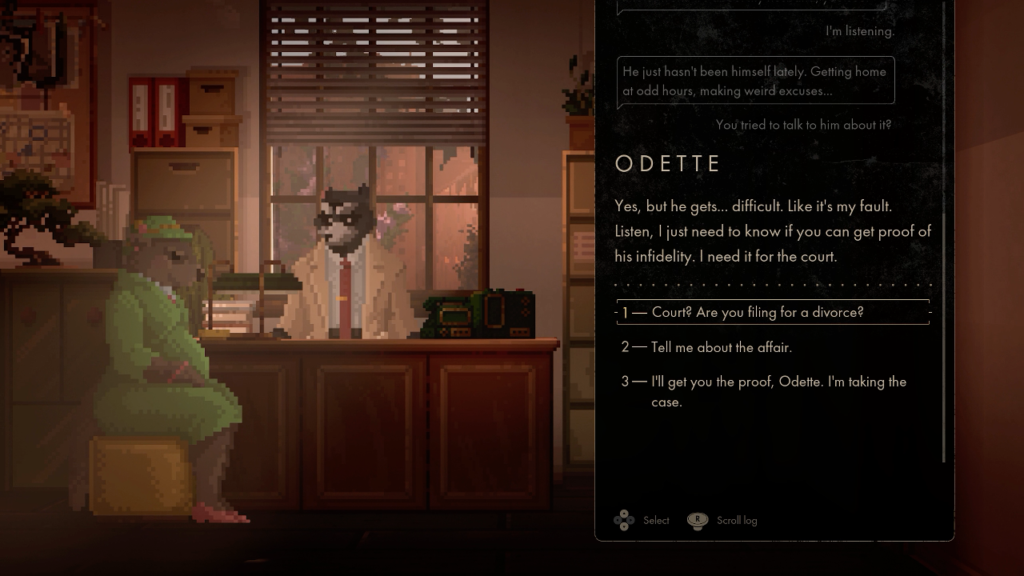
Most of Backbone’s four hour runtime is spent investigating Howard’s latest lead. I guide him back and forth along Vancouver’s streets, slums, and skyscrapers, speaking with animals to learn new angles and insights into the conspiracy. My greatest flexibility within the narrative is choosing how Howard interacts with these characters. In his conversation with Odette, I can choose to make Howard rude and disinterested, concerned and professional, or blunt and informal. In typical narrative videogame fashion, all my choices lead to the same conclusion, though these dialog paths can feel especially forced and circuitous. Backbone knows the story it wants to tell and it doesn’t have much tolerance for my attempts to derail it.
Investigations don’t provide much to speak of as interactive experiences. Howard can run, but there’s nowhere to reach quickly. He can crouch behind objects to hide from watchful eyes, but there are only a few places where this is necessary to proceed. He can pick up items and examine them in his inventory, but there’s no reason to do so; nothing stays in his pockets long enough to require additional scrutiny. Backbone so wholly subsumes itself in its narrative that its ludic elements feel perfunctory, existing as though to unnecessarily reassure the player that they are, in fact, playing a videogame.
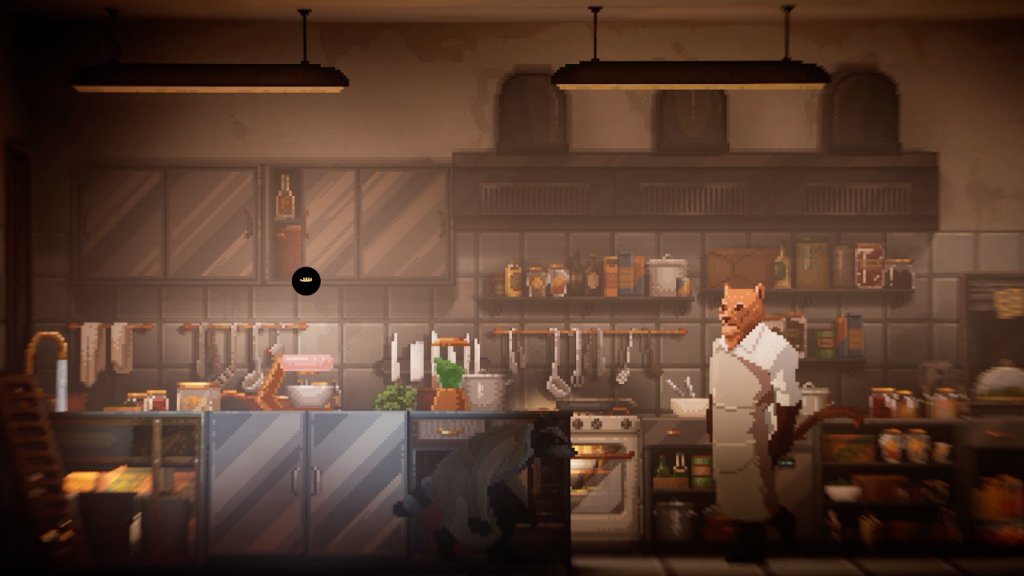
I’m disappointed that Backbone is such a placidly guided experience because its vision of Vancouver is impressively imagined and constructed. As I steer Howard at a leisurely stroll up and down Vancouver’s lavishly decorated streets, I can peek into storefronts and apartment windows. They are filled with people and objects that suggest Backbone’s interior world of Vancouver that will be affected by Howard’s investigation.
A walk up Granville, the first street Howard visits, provides a taste of Backbone’s visual splendor. A theater marquee advertises movies called “The Day I Bought a Bike,” “Citizen Mane,” and “Johny & John Don’t Drive.” Above a barbershop called Luscious, I can see through an apartment window where a rat’s silhouette is highlighted by the light of their television. In the next window, a dog lounges on a sill where they watch pedestrians pass below, their neat bedroom illuminated by a rosy light.
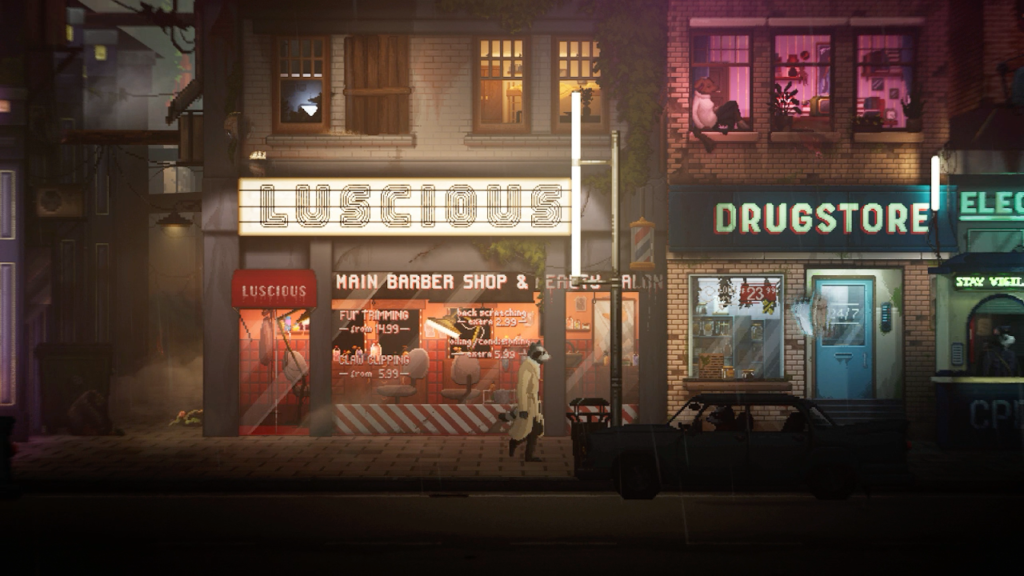
Next door to Luscious is The Bite, a restaurant Mr. Green is known to frequent. A bear bouncer dressed in a suit refuses entrance to Howard. “No entrance for raccoons,” he says bluntly, giving me a glimpse at the prejudiced class system that controls Vancouver. Raccoons, referred to with the slur “stripers,” are near the bottom of the hierarchy. When Howard finally talks his way inside, I can have him stop at the smoky bar to listen to a jazz singer perform “Abode,” a song describing the city’s darkness and shadows growing as day changes to night—the eerie temporal setting of the noir story.
And then Backbone suddenly changes genres. I find myself more disappointed in this than anything else. As much as I feel the adventure videogame elements are stitched on and the dialog trees force me onto the path Backbone wishes Howard to take, I do genuinely enjoy the investigation, soaked in racial and sexual politics, as well as the gorgeously imagined city. Then the genre shifts and Howard spends the rest of the story in tiny, cramped spaces, often having philosophical conversations with himself over a black screen.
In Backbone’s third act, everything I enjoy about it vanishes.
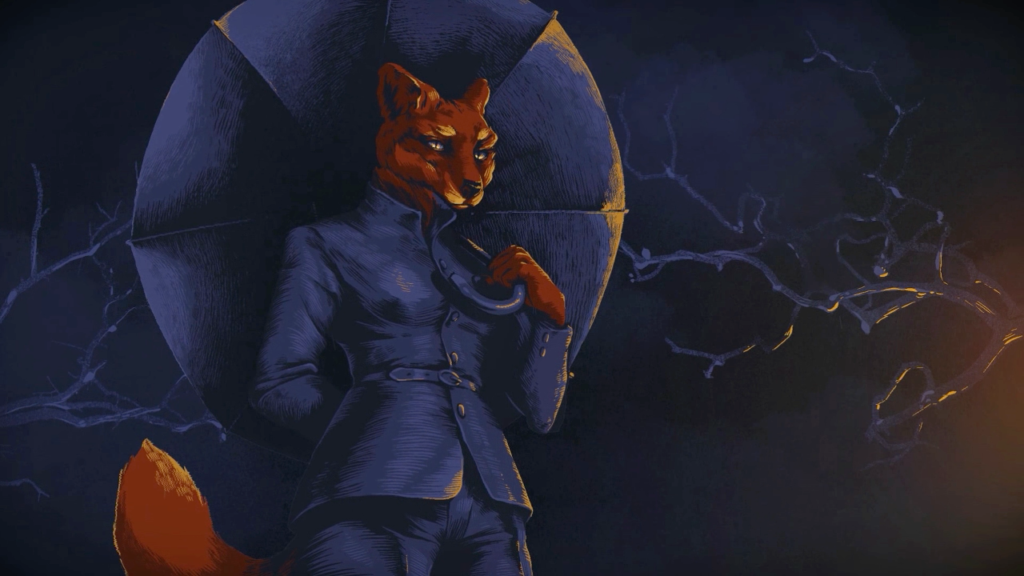
These events do not entirely betray Backbone’s noir roots. The genre is known for its cynical endings where even if the bad guy is stopped, the system which they operate within continues on. As one film noir famously concludes: “Forget it, Jake. It’s Chinatown.”
Yet I find here a bleak ending transformed into pitch black. Backbone’s store page declares “the end of all things is inevitable, but defining which version of Howard Lotor reaches the conclusion is up to you.” The only version of Howard I see once the final image fades and the credits roll is a helpless victim. The noir detective archetype, the tireless avatar of justice in an unjust world, is obliterated. There is no hope to be found here. Maybe that’s what makes it post-noir.
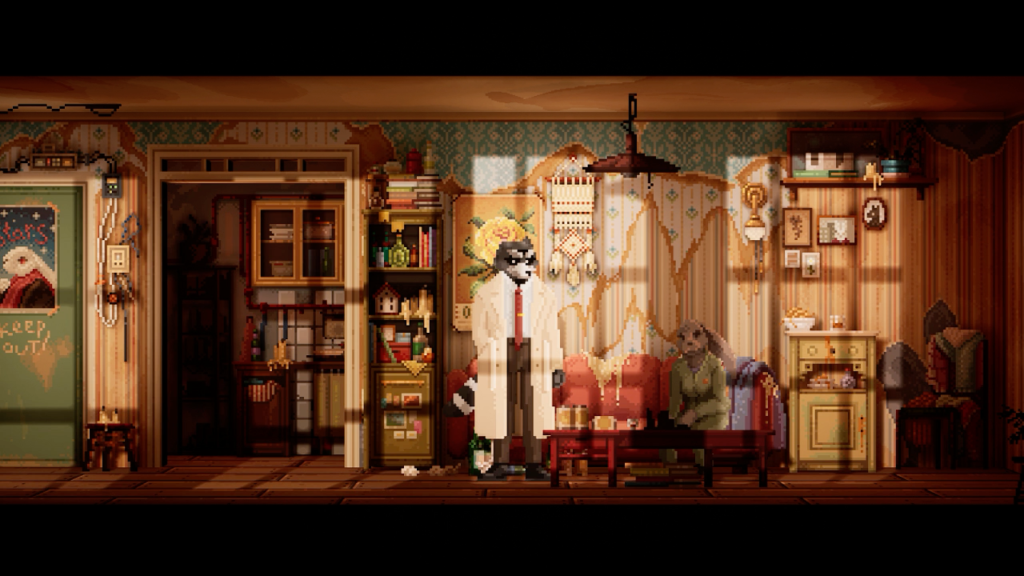
I cannot accuse Backbone of not taking risks. It subverts narrative and videogame design expectations at every turn. Howard can pick up items, but they have no meaning in the investigation. He investigates a husband’s infidelity, but never finds proof. He acquires a gun to defend himself, but never fires it. He seeks justice for the crimes he witnesses, but finds none. It’s an apocalyptically dark and inconclusive narrative that asks me to find meaning in Howard’s journey, and especially his end, but I’m not sure there is any. I cannot recall the last videogame I finished with more conflicting feelings.